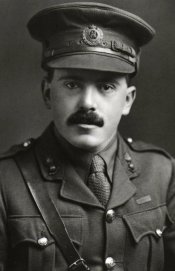Frederick Henry Johnson facts for kids
Quick facts for kids
Frederick Henry Johnson
|
|
|---|---|
 |
|
| Born | 15 August 1890 Streatham, London, England |
| Died | 26 November 1917 (aged 27) Bourlon Wood, France |
| Buried |
Remembered on the Cambrai Memorial
|
| Allegiance | |
| Service/ |
|
| Years of service | 1914–1917 |
| Rank | Major |
| Unit | Royal Engineers |
| Battles/wars | World War I |
| Awards | Victoria Cross |
Frederick Henry Johnson (born August 15, 1890 – died November 26, 1917) was a brave British soldier. He won the Victoria Cross, which is the highest award for courage given to soldiers from Britain and the Commonwealth. This medal is given for incredible bravery during a battle.
Contents
Who Was Frederick Henry Johnson?
Frederick Henry Johnson went to school at Whitgift Middle School and St Dunstan's College. He also studied at Battersea Polytechnic. In 1914, he joined the British Army as a Second Lieutenant. He was part of the Royal Engineers, a special group of soldiers who build and fix things.
A Heroic Act at the Battle of Loos
On September 25, 1915, when he was 25 years old, Johnson showed amazing bravery during the Battle of Loos. This battle was part of World War I. His actions helped his fellow soldiers a lot.
Even though he was shot in the leg, he kept fighting. He led his men in several attacks against the German positions. The fighting was very intense, with lots of gunfire. At a very difficult moment, he kept encouraging his soldiers. He helped them stay strong and hold their position. His courage and calm actions saved the day for his unit. He stayed at his post until other soldiers took over later that evening.
For his incredible bravery, Frederick Henry Johnson was awarded the Victoria Cross. This award recognized his outstanding courage and dedication to his duty.
His Later Life and Legacy
After this brave act, Frederick Henry Johnson continued to serve. He was promoted to the rank of Major. Sadly, he was killed in action on November 26, 1917. He was leading his company of Royal Engineers in Bourlon Wood, France, during another battle.
Major Johnson is remembered on the Cambrai Memorial to the Missing in France. This memorial honors soldiers who died in the area and have no known grave.
The Victoria Cross Medal
Frederick Henry Johnson's Victoria Cross medal is currently owned by a private collector.

